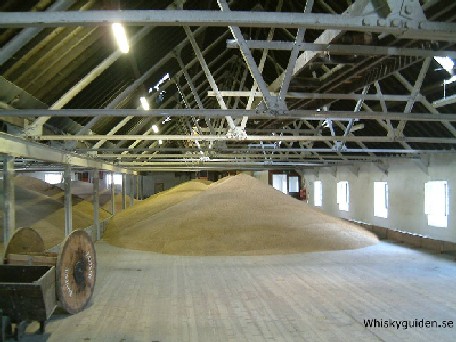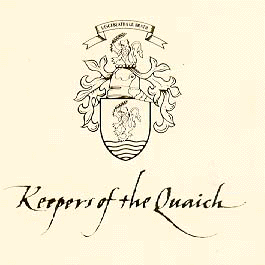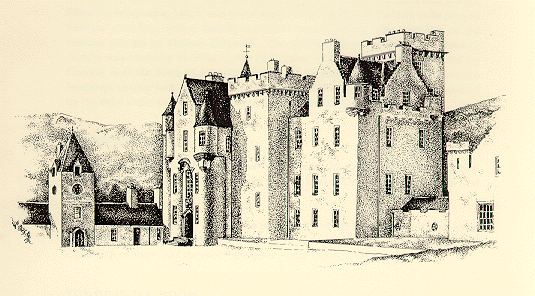Secret Agent Malts
Let me regale to you the story of two secret agents in the cloak & dagger world of Wm. Grant & Sons (Dufftown) the distiller of The Balvenie and Glenfiddich. Doggedly traditional in their practices, the Balvenie distillery is still dedicated to the traditions, care and craftsmanship of malt whisky making. These are clearly people who care about malt whisky and don’t want anybody else messing with their elixir – their “water of life”.
Our Heroes
Into this idyllic malting environment steps our heroes…
 Burnside and
Burnside and  Wardhead
WardheadTheir task – protect the singularity and uniqueness of Wm. Grant’s single malts (without drawing too much attention to themselves 8) ).
Our Story
The Balvenie range of single malt whiskies is unique – three single malt whiskies of different age and different character. Each Balvenie single malt reflects in its individuality, different aspects of the tradition, skill and care that are the hallmarks of the Balvenie Distillery (and thus a great candidate for a vertical tasting – see Discussion Points below). This ‘brand’ is jealously protected, indeed, official distillery bottlings are all you are likely to find – and just like with Glenfiddich, independent bottlings are very rare indeed (there are exceptions, although, admittedly rare).
This is where our heroes come in. After all, someone has to protect the hallowed brand images of The Balvenie and Glenfiddich from the dark and sinister world of the malt whisky broker and the independent bottler 😈 . Ordinarily, each cask of Balvenie or Glenfiddich that is sold to brokers or blenders is ‘polluted’ with a minute quantity of the other malt, making it a ‘vatted malt’ and thus illegal to sell as a single malt. This prevents a third party, such as an independent bottler, from bringing the whisky to the market as a single malt from a particular distillery.
These vatted malts, our heroes, aren’t sold under their official names either…
 is Balvenie with 1% Glenfiddich.
is Balvenie with 1% Glenfiddich.while ‘Wardhead’
 is the name for Glenfiddich with a dash (1%) of Balvenie
is the name for Glenfiddich with a dash (1%) of BalvenieDenouement
Why does Wm. Grant & Sons feel compelled to do this? I mean why don’t they just not sell it to other people? The economic reality of the Scotch industry, I guess much like every industry, is that cash flows from the mass market where blends rule the day. Every distillery has to sell their whisky to brokers and blenders or risk not participating in the economy of their industry and becoming insolvent. Wm. Grant & Sons does indeed participate in this demand-driven economy but transacts into that economy with their slightly vatted malts thus legally insuring that the only destination that the whisky can have is as part of a blend and not as a single malt (from an independent bottler let’s say).
Discussion points
1) Just how chummy are The Balvenie and Glenfiddich? If you can add 1% of each into the other without materially affecting the character doesn’t that say something to how similar they really are?
2) What’s the big deal with the brands The Balvenie and Glenfiddich? Independent bottlers have a way of presenting single malts as being exclusive and special. It seems to me that The Balvenie and Glenfiddich are as mass market oriented as you can get in the single malt industry in the US. I think The Balvenie and Glenfiddich could use some help haloing exclusivity into their brands.
3) Did anyone notice what Burnside really is? Not just a vatted malt but it was a 6yo! I didn’t realize just how insidious the practice of blending is, although it does fit all of the evidence…not only are they 75-80% grain alcohol but the remainder single malts are usually aged, I’ll guess, less than 8 years! It all makes sense now! I finally see the light on what blends are and how they got that way (taste that is). Why, for instance, you can have a premium progression from Red Label, to Black Label, Gold Label, and Blue Label – they must simply be using longer aged single malts in the more “premium” blends.
4) And now for some fun…given this excerpt from above “The Balvenie…is unique – three single malt whiskies of different age and different character” can the KOTQ – Chicago Chapter discern these different characters?



